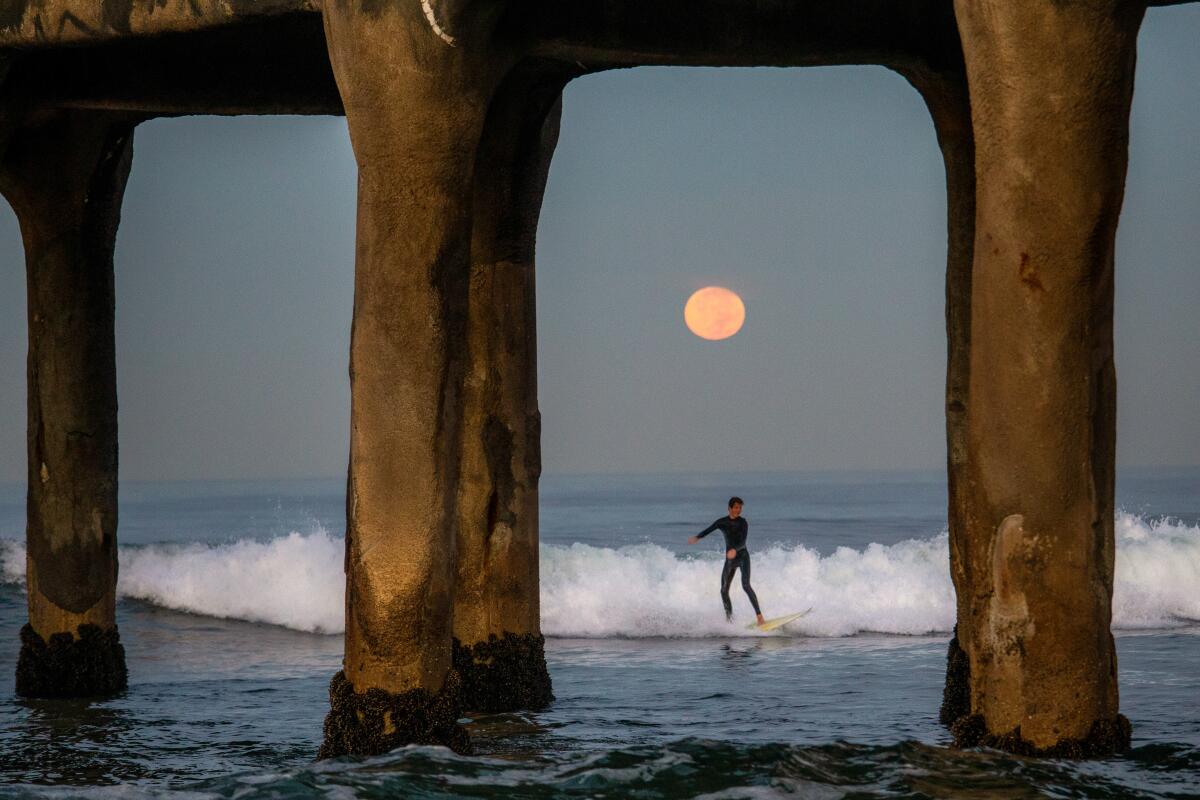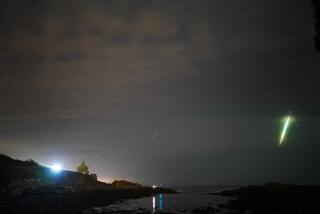This week’s Hunter’s moon is about to get supersized

- Share via
- Of four consecutive supermoons, this one is the largest.
- Saturn and an Oort cloud comet will also be visible to the naked eye.
In the wee hours of Thursday morning, Angelenos will get their first peek at a double whammy astronomical delight — a Hunter’s moon that also happens to be a supermoon.
The full moon in October is known as the Hunter’s moon because it takes place around the start of hunting season and traditionally offered a key opportunity to spot prey lurking in recently harvested fields, according to the Farmer’s Almanac. A supermoon occurs when the full moon is at its closest possible point to Earth, which causes it to appear 14% larger and 30% brighter than the faintest moon of the year, according to NASA.
For the record:
10:41 a.m. Oct. 17, 2024A previous version of the story identified Vanessa Alarcon as the astrological observer at the Griffith Observatory. She is the observatory’s astronomical observer.
Vanessa Alarcon, the astronomical observer at the Griffith Observatory, said it can be challenging for the human eye to notice these differences in size and brightness, but that shouldn’t stop people from trying.
“That’s actually a really good reason for everybody to keep watching the moon every month: so you’ll see every single full moon and observe how they change,” she said. “I think the most exciting thing about these special moons is that it gets people back out there observing the sky and our closest neighbor in the solar system, which has kind of fallen out of popularity because of all the light pollution around us.”
The Hunter’s moon officially becomes full at 4:26 a.m. PDT on Thursday, according to NASA. It is the largest of four consecutive supermoons in 2024.
Alarcon recommends people try watching it around sunset on Friday, when it will rise from the Eastern horizon and appear especially supersized.
And when people are ogling the night sky this week, they should also keep an eye out for two additional celestial sightings — Saturn and the appearance of an ancient Oort cloud comet, she added.
Discovered last year, the comet C/2023 A3 Tsuchinshan-ATLAS will be visible in the California sky on Saturday night for the first time in 80,000 years.
The comet, dubbed C/2023 A3 Tsuchinshan-ATLAS, dropped within viewing distance of Earth on Saturday and can still be viewed for the next few days, Alarcon said. It was discovered last year by astronomers in China and South Africa as it approached the inner solar system, and after this visit, it won’t be seen again for 80,000 years, according to NASA.
October is also a great time to watch Saturn, because the planet reached opposition in September, meaning the Earth is directly between Saturn and the sun, she said. Similar to a supermoon, this phenomenon causes Saturn to appear brighter and larger in the sky because it is at its closest point to Earth, according to Space.com.
Viewers can spot Saturn with the naked eye, but in order to see its rings, they will need a backyard telescope. And people should do so soon, because in 2025 the planet will be rotated at such an angle that its signature rings will temporarily disappear from sight.












